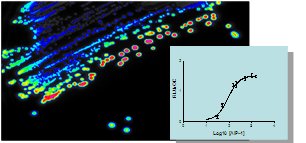Understanding the language of cell-to-cell communication in Staphylococcus aureus
Members of the Schools of Pharmacy and Molecular Medical Sciences based at the Centre for Biomolecular Sciences jointly published a paper in the Journal of Molecular Biology entitled:
Rasmus O. Jensen
a, Klaus Winzer
a, Simon R. Clarke
a, Weng C. Chan
b and Paul Williams
a ,*
a Institute of Infection, Immunity and Inflammation, School of Molecular Medical Sciences, Centre for Biomolecular Sciences, University of Nottingham, University Park, Nottingham, NG7 2RD
b School of Pharmacy, Centre for Biomolecular Sciences, University of Nottingham, University Park, Nottingham, NG7 2RD
Lay summary:
Infections caused by Staphylococcus aureus are of major clinical importance. In particular, hospital-acquired methicillin-resistant S. aureus, commonly known as MRSA, can cause problematic infections that are potentially life threatening. In a research programme funded by the Medical Research Council (MRC), UK, researchers led Professor Williams and Dr Chan have applied molecular biological and chemical techniques to gain better insights into the infection-specific lifestyle of S. aureus. They have discovered that staphylococci cells talk to each other and that discruption of this communication line can be exploited as a new way to prevent and treat staphylococcal infections.
Although the language of staphylococcal communication that uses the molecules known as Auto-Inducer Peptides (AIPs) as 'words' is well established, the receptor that senses these 'words' was less understood. In this paper, we have used genetic engineering tools to make small changes to the receptor, and established at the molecular level which part of the receptor is important for sensing the 'words' of communication. Using a chemically crafted 'dummy word', we have previously shown that staphylococcal communication can be efficiently disrupted. Importantly, we now show that by making a single small change to the sensor receptor, the 'dummy word' is now sensed by the new receptor and communication is re-established. This discovery is profoundly important since it can provide an insight into the evolution of staphylococcal cell-to-cell communication.

Bioluminescent Staphylococcus aureus and dose-response curve showing the intensity of communication
Click on the title of the publication (above) to see the abstract and full details